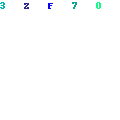Atm Hacker Software


Pierluigi Paganini is Chief Technology Officer presso CSE Cybsec Enterprise, member of the ENISA (European Union Agency for Network and Information Security)Treat Landscape Stakeholder Group, he is also a Security Evangelist, Security Analyst and Freelance Writer. Editor-in-Chief at Cyber Defense magazine, Pierluigi is a cyber security expert with over 20 years experience in the field, he is Certified Ethical Hacker at EC Council in London. The passion for writing and a strong belief that security is founded on sharing and awareness led Pierluigi to create the blog 'Security Affairs,' recently named a Top National Security Resource for US.
Pierluigi is a member of the The Hacker News team and he is a writer for some major publications in the field such as Cyber War Zone, ICTTF, Infosec Island, Infosec Institute, The Hacker News magazine and for many other security magazines. He is the author of the books The Deep Dark Web and Digital Virtual Currency and Bitcoin. • Free Practice Exams • • • • • • • Free Training Tools • • • Editors Choice • • • • • • • • • • • • • • • • Related Boot Camps • • • • • • • • • • • More Posts by Author • • • • • • •.
Hackers hit ATM systems forcing them to dispense the cash stored in their money cases relying on certain commands sent through a smartphone.
(Image: ZDNet) Researchers have revealed a novel way for hackers to withdraw money fraudulently through an ATM, and without any need to physically access the device. When an ATM is compromised, you expect to find a cybercriminal has used one of the most popular methods to do so, such as compromising the ATM's through malware or physically tampering with ATM hardware to force the machine to spew out cash uncontrollably. I Pilastri Della Terra Pdf To Excel.
Now, security experts have discovered a novel method that doesn't require the attacker themselves to visit an ATM at all, but they still cash out., security researchers uncovered a two-year criminal operation that relieved banks of $1 billion worldwide by compromising ATM machines in Russia through the use of the Carbanak malware. In February 2017, Kaspersky published the resulted of 'fileless', which revealed a new method for criminals to attack ATMs by using in-memory malware to infect banking networks that permitted them to set up tunnels to control Powershell-based hosts remotely. After being called to assist a bank that became a victim of ATMitch, the unnamed bank's specialists were only able to share two files containing malware logs from the ATM's hard drive and no other leftover information or files relating to the attack. These two small files, kl.txt and logfile.txt, were enough for the researchers to create YARA search strings to find malware samples related to the ATM attack in public repositories.
However, the researchers had little to work with except two process strings containing the phrases, 'catch some money, bitch!' And 'dispense success.' A malware sample dubbed 'tv.dll' or 'ATMitch' was among the results. Spotted only twice in the wild -- once in Kazakhstan and once in Russia -- ATMitch is remotely installed and executed on an ATM.
Golovanov told ZDNet that this may be made possible through a remote console, which is used by the hacker to create an SSH tunnel, deploy the malware, send a query to find out how much money is available, and then send the command to the ATM to dispense cash. The ATM treats the malicious code as legitimate software, a fact the remote operator takes advantage of to push the command forward at their required time, and associates pick up the money.